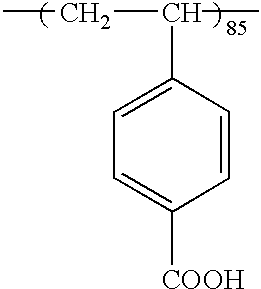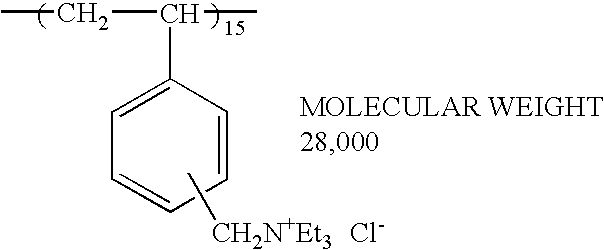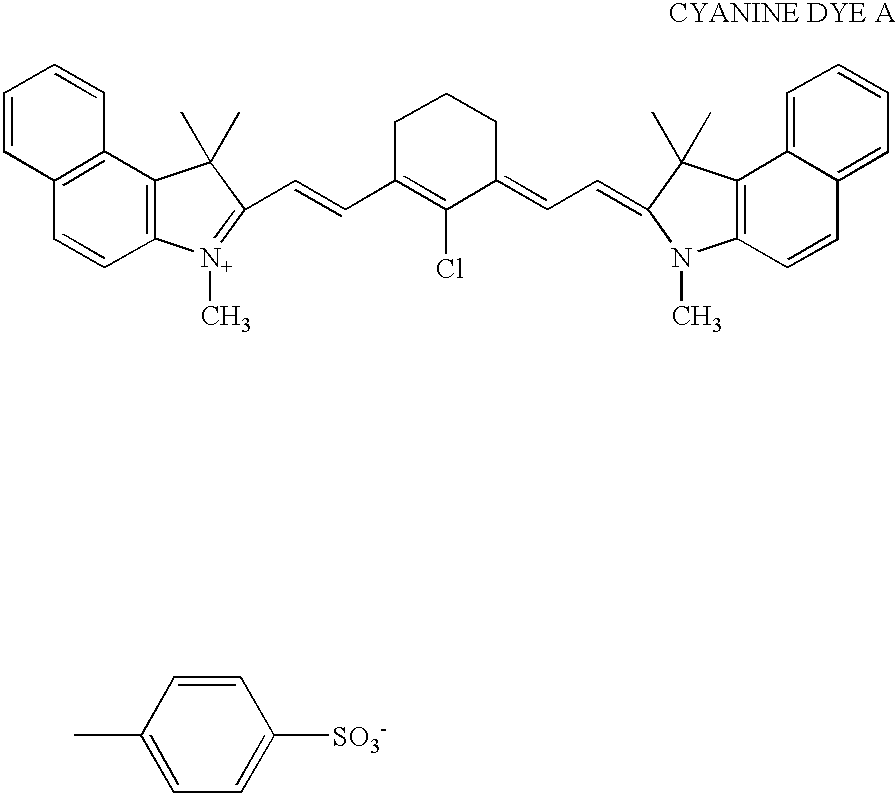If the water wettability of a support is too low, an ink is attached to non-image areas at the time of printing, thereby causing a
dirt on a
blanket cylinder and further a so-called scum.
In addition, if the water receptivity is too low, a shadow portion may be plugged unless much fountain solution is applied at the time of printing.
However, in the aforementioned related arts, since scum resistance and press life are traded off, both cannot be achieved at the same time.
If the surface slightly soluble layer is, however, damaged due to some cause, even an area which is supposed to be an
image area becomes soluble in the developer.
That is, practically, a printing plate is too easily damaged.
For that reason, it is the status quo that handling of the presensitized plate at the time of working is difficult, since scratch-like non-image portions are generated even by a subtle touching such as hitting of the plates when handling the presensitized plate, a subtle
rubbing with
interleaving sheets, or a contact of fingers with plate surface.
Although countermeasures are taken to lower
coefficient of friction by providing a layer having a
fluorine-containing surfactant or a
wax on the surface of the
image recording layer in order to improve damage resistance, they are not sufficient.
However, contact characteristics between the
image recording layer and the support deteriorate.
In addition, if the
surface shape of the support is smoothened to remove deep concave portions existent on the
support surface which cause residual
layers in order to increase scum resistance, press life largely deteriorates, thereby the presensitized plate becoming impractical.
However, since
thermal conductivity of an aluminum support subjected to graining treatment is much higher than that of the image
recording layer., a heat generated in the vicinity of an interface between the image recording layer and the support diffuses inside the support before it is sufficiently used for
image formation.
Consequently, in the case of the aforementioned thermal
positive type image recording layer, if a heat diffuses inside the support and an alkali-soluble reaction is insufficient, a problem arises that residual
layers are produced in an area which is supposed to be non-image areas, thus sensitivity becomes low, constituting an essential problem with a thermal
positive type image recording layer.
In addition, these absorbents are difficult to be removed since they are attached to micro apertures (micropores) generated by
anodizing treatment.
Therefore, a problem arises that residual
layers are easily produced in a development process with an alkali developer.
If a developer containing an
alkali metal silicate is used for development, however, problems occur such as that a
solid substance attributable to SiO.sub.2 easily deposits, a gel attributable to SiO.sub.2 generates in a
neutralization treatment for treating the waste of the developer.
As a result, there are cases where non-image areas is whitened at the time of development, or scum or
sludge is generated at the time of development.
In the meantime, when development is performed using a developer containing substantially no
alkali metal silicates, there is a problem that, if the support for a lithographic printing plate is not subjected to
alkali metal silicate treatment, a phenomenon that an ink is not easily removed when a printing
machine stops and printing is restarted after the lithographic printing plate is left as it stands on the printing
machine (deterioration in scum resistance after being left) easily occurs.
If the average aperture
diameter of a pit of the grained structure with medium undulation is less than 0.5 .mu.m, press life of the lithographic printing plate may deteriorate due to decrease in contact characteristics with the image recording layer provided as an upper layer.
On the other hand, if the average aperture diameter of the pit of the grained structure with medium undulation exceeds 5 .mu.m, press life may deteriorate due to decrease in the number of pit boundary areas playing a role of the anchor.
On the other hand, if the average aperture diameter of the pit of the grained structure with small undulation exceeds 0.2 .mu.m, the aforementioned effect of improving press life by the grained structure with medium undulation may not be obtained since the grained structure with medium undulation is broken.
If the average
wavelength of the grained structure with large undulation exceeds 100 .mu.m, inspectability of the printing plate may be impaired since the exposed non-image areas appear dazzling after
exposure and development.
As a result, when fountain solution is supplied to the surface of non-image areas in a lithographic printing plate at the time of printing, it is difficult to visually inspect and control an amount of the supplied fountain solution since the surface of a printing plate easily dazzles.
If TP exceeds 3 msec, particularly when
nitric acid electrolyte is used, an aluminum plate is easily affected by trace components in an
electrolyte represented by
ammonium ion or the like that spontaneously increase in electrochemical graining treatment, thus the even graining is not easily performed.
As a result, scum resistance is likely to deteriorate when a lithographic printing plate is prepared.
If it is lower than 50 Hz, the carbon
electrode of a main
electrode is easily dissolved, and if it is higher than 70 Hz, it is easily affected by the components of
inductance in a power supply circuit, thus an
electric power cost increases.
If cathodic amount of
electricity is less than 3 C / dm.sup.2, an amount of attached
smut may be insufficient, and if it exceeds 80 C / dm.sup.2, an amount of attached
smut may be too excessive.
If an amount of
etching exceeds that range, it is less economical.
In addition,
dirt may deteriorate during printing.
If the density of the formed layer is less than 1,000 kg / m.sup.3, the strength of the layer may become weak, thereby badly affecting image forming characteristics and press life, and if the density exceeds 3,200 kg / m.sup.3, sufficient heat insulation can not be obtained, thereby decreasing a sensitivity-improving effect.
If the
porosity of a water receptive layer is 70% or less, a problem that
dirt is generated in non-image areas does not easily take place.
If
treatment time is shorter than 1 hour, an effect of soaking treatment may be insufficient.
Attachment of a plate to the plate cylinder of a printing
machine, however, deteriorates if the elasticity is enhanced.
 Login to View More
Login to View More 


